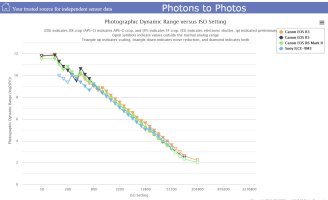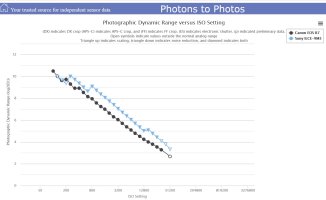I have neither the depth of knowledge or skills to replicate much less understand much of what you did with this comparison but I appreciate your dedication and insights. I have been a lifelong Canon user and find myself so heavily invested in glass that whenever I flirt with the idea of a platform change I cringe at the effort to swap out not only bodies but all of my lens and accessory collection as well as learn a new interface. That tax on change is what I am sure keeps most of us in place with our existing platforms.
I have watched Sony over the years and have observed many friends and fellow shooters swap from Nikon or Canon to Sony or newer shooters start out with Sony. I have also watched their innovation initially in sensors, then in bodies and finally in glass as they have caught up and in many ways surpassed competition.
I know this post and my reply will illicit all sorts of hate as Canon bashing, look at the statistics for sales, if you don’t like Canon just switch and be gone, etc., etc. My reply is not meant to stoke that response but to note that as you say, Sony is bringing their A game and Canon better step up. I am more of a landscape shooter with interest in wildlife and what Sony is going with the A7R series and the A9III series is spectacular. Match that with their native lenses and open lens architecture and third party options and they continue to be a compelling platform for my style of shooting. My biggest barriers to entry continue to be existing investment in platform and user interface. That barrier will be tested with what Canon does for the rest of this year as I really would like to see a high MP replacement for the 5DSR and R5 that I currently shoot with as well as a compelling competition to the A9III with better native lens options and an open lens architecture that would convince me to upgrade my aging EF lens lineup (600 F4 II, 11-24 F4, Sigma 14mm f1.8, and a long line of other EF lenses).


